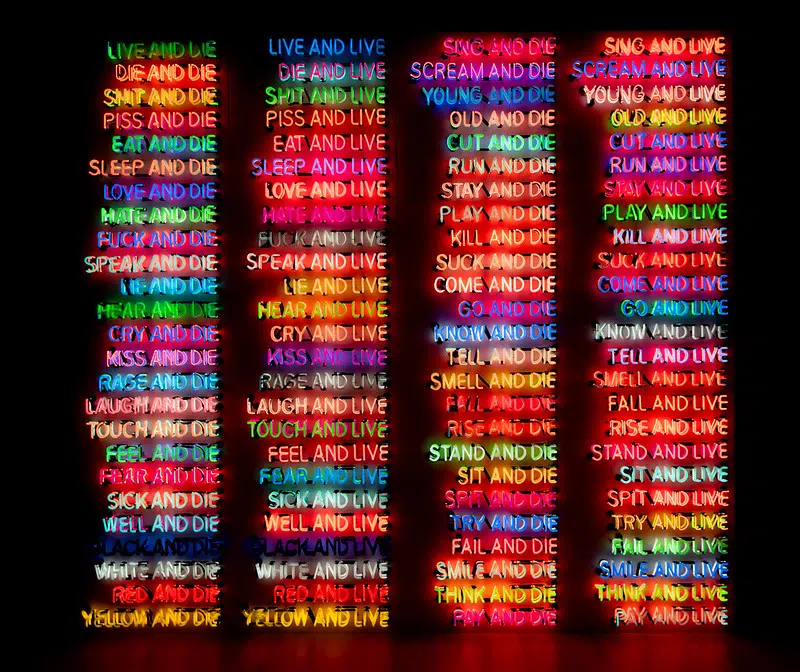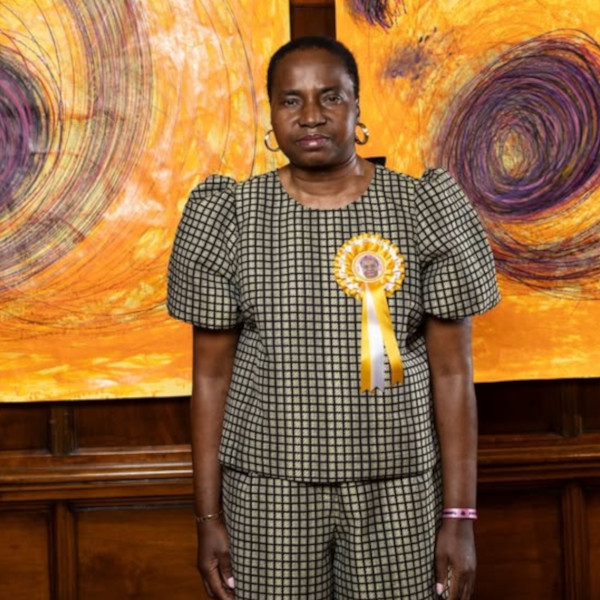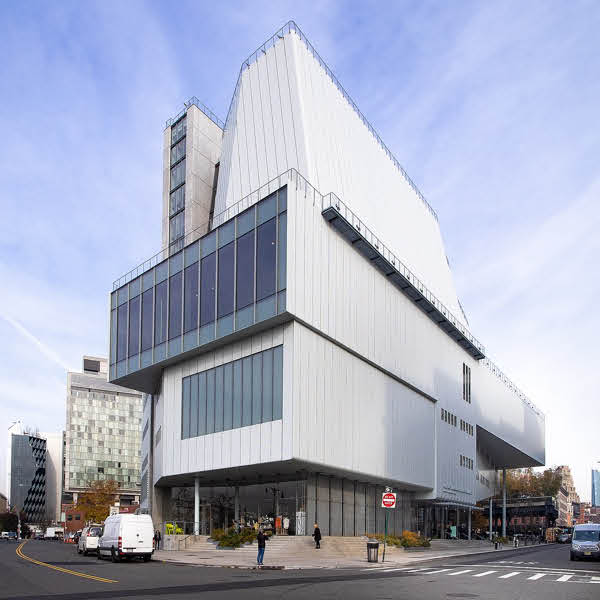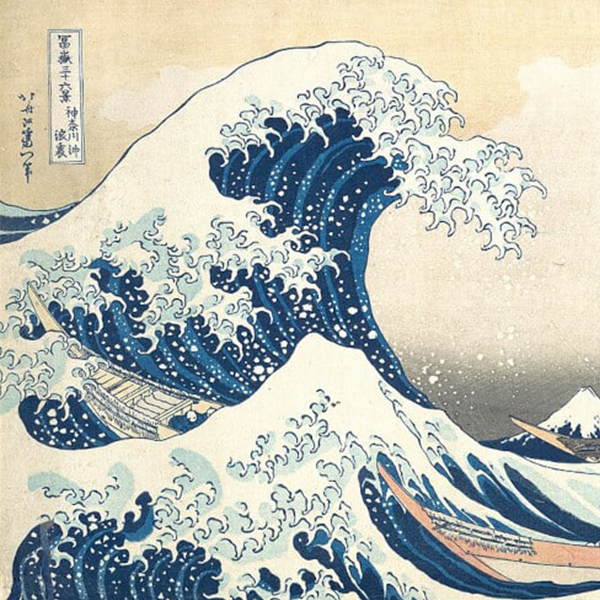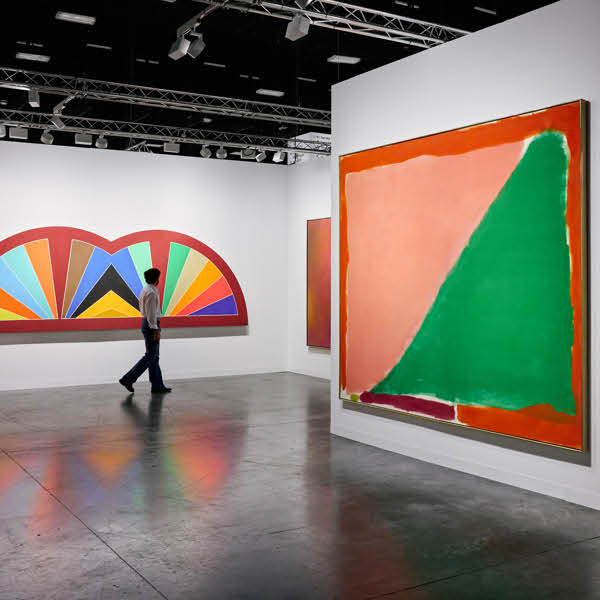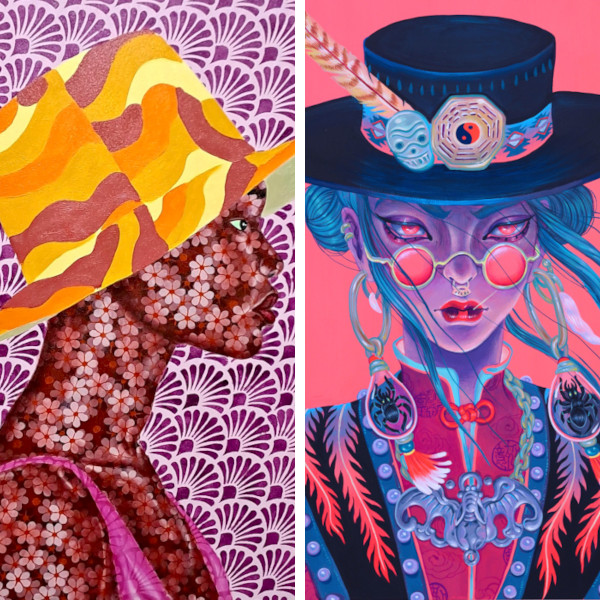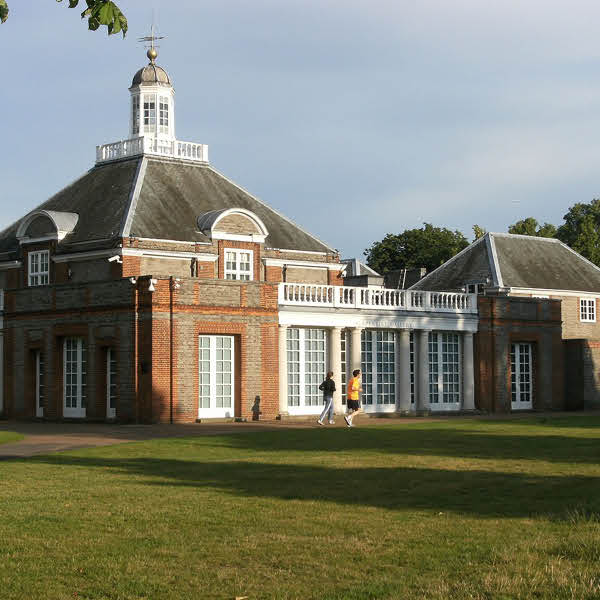
Language is a powerful tool. And no one understands that better than artists who thoughtfully utilize text to make a statement and draw out emotion. By using text as the central communication vehicle in their artistic expression, these artists push forth letters, numbers, and words as their primary means to get out their message.
Of course, text and art have been intertwined for centuries—think of medieval illuminated manuscripts, with their elaborate illustrations. But things really took off in the 20th century. When Surrealist artist Magritte famously wrote “Ceci n’est pas une pipe.” (“This pipe isn’t a pipe.”) across his painting, he moved text to a central role in understanding the work. Cubism and Cubists such as Georges Braque were also known for incorporating text into their artwork, often highlighting its graphic quality.
From the 1960s onward, a group of artists increasingly focused on text in their art. From large-scale installations to word paintings, sculptures to public murals, the versatility—and power—of the written word forces the viewer to reflect. Clever word play, political activism, subversion of advertising, and appropriation of form are just some common characteristics of powerful text art. Scroll down to learn a little more about the masters who pioneered the contemporary word art movement.
We look at 8 contemporary word artists who use words, letters, and numbers to give meaning to their art.
Barbara Kruger

Photo: Barbara Kruger by charlotte henard (CC BY-SA 4.0)
American conceptual artist Barbara Kruger’s work uses catchy phrases laid over images to challenge ideas of power, identity, and sexuality. Playing off sensational news headlines or advertising slogans, her work forces the viewer to explore their understanding of how these traditional media outlets skew our perceptions. “I work with pictures and words because they have the ability to determine who we are and who we aren’t.”
Jenny Holzer
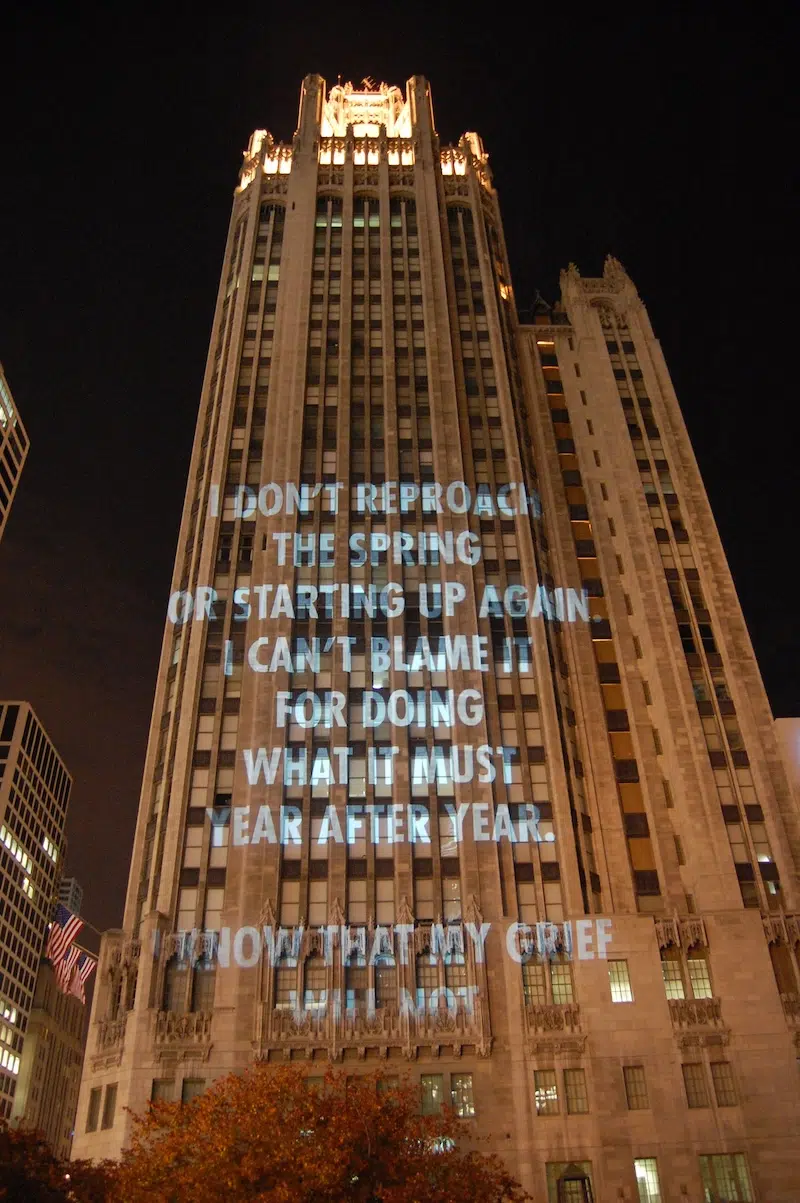
Photo: Jenny Holzer by Simon King (CC BY-NC-ND 4.0)
Emerging in the 1980s, Jenny Holzer is known for her projections, which took advantage of what was new technology at the time. Her 1982 work in New York’s Times Square used LED to broadcast her messages to a wide audience. Recurring themes in her work are tribulations of modern life, as well as issues of religion and gender. Using direct language, and often juxtaposing shocking phrases, she forces the public to confront societal issues.
Ed Ruscha
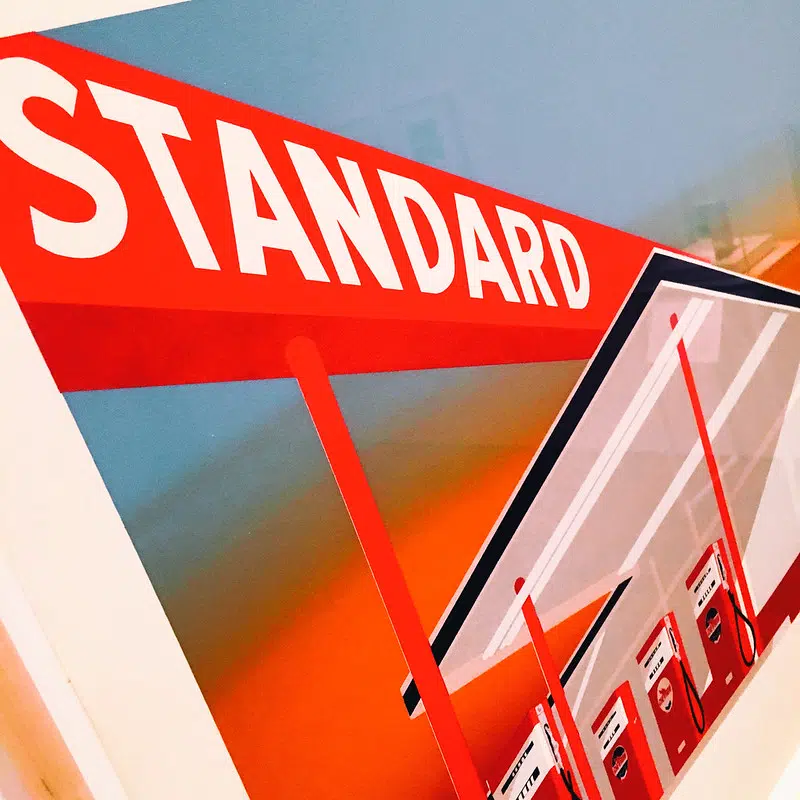
Photo: Ed Ruscha by Thomas Hawk (CC BY-NC-ND 4.0)
Active since the 1960s, Ed Ruscha is often categorized as a pop artist. Based in Los Angeles, his work pulls through the ironies of life on the West Coast, often placing text over bright, vibrant color patterns or dramatic, cinematic backgrounds. Ruscha is also known for experimenting with unusual media, having used everything from chocolate syrup to blood in his artwork.
Christopher Wool
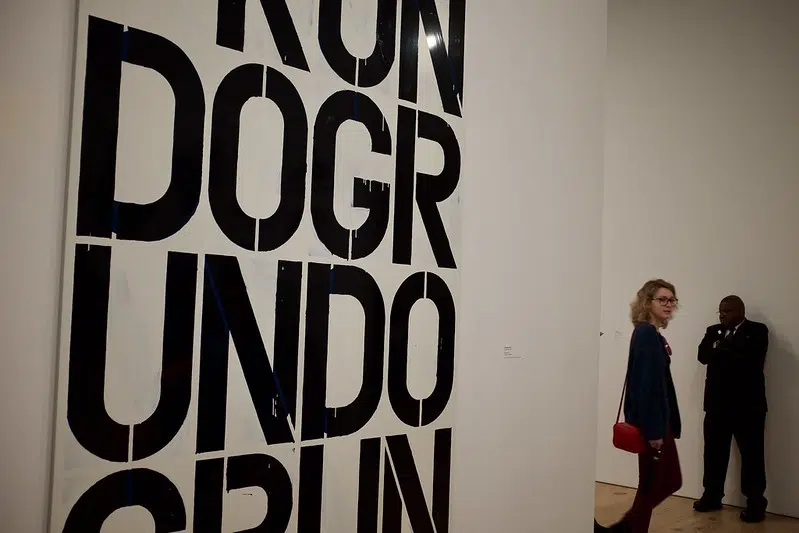
Photo: Run Dog Run, Christopher Wool by Ian Crowther (CC BY-NC-ND 4.0)
Based in New York and Marfa, Texas, Christopher Wool is best known for his series of black text rolled onto white canvases, which he produced in the 1980s. In fact, his work Apocalypse Now, sold at Christie's for over $26 million in 2013. The bold letters, executed as stencils, were inspired by the graffiti Wool was seeing in New York City.
Bruce Nauman
Multi-media artist Bruce Nauman works with video installation, performance, sculpture, and photography, but his most text-heavy works are his neon light sculptures. Focusing on semantics, his work often centers on how slight changes in words can have a fundamental effect on meaning. “Perception itself—the viewer’s encounter with his or her body and mind in relation to the art object—can be interpreted as the subject matter of Nauman’s work,” writes Nancy Spector, chief curator of the Guggenheim in New York.
Mel Bochner
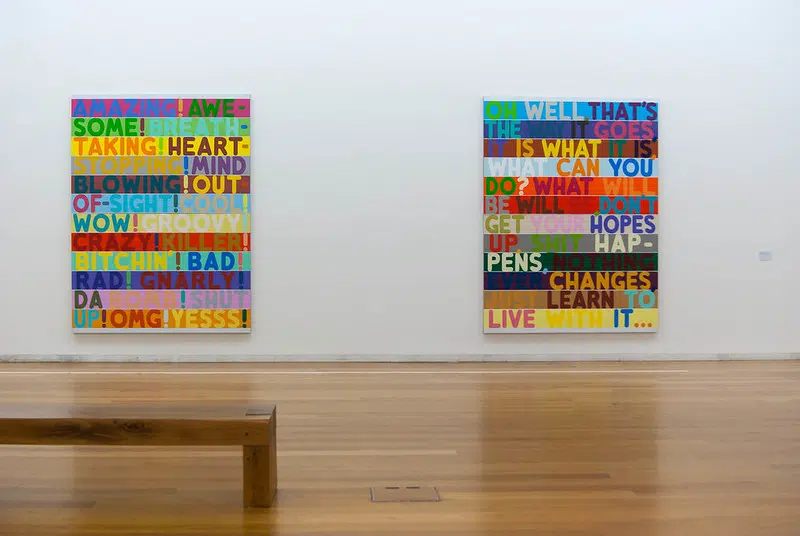
Photo: Mel Bochner at Museu Serralves by Ruben Garcia (CC BY-NC 4.0)
Conceptual artist Mel Bochner has been active since the 1960s, starting practices that are now taken for granted, such as using gallery walls as a canvas for his work. A highly versatile artist, Bochner works with painting, installation art, and photography. His thesaurus paintings show overlapping synonyms executed in rainbow colors, while other pieces often take a single word, repeated for effect.
Steve Powers
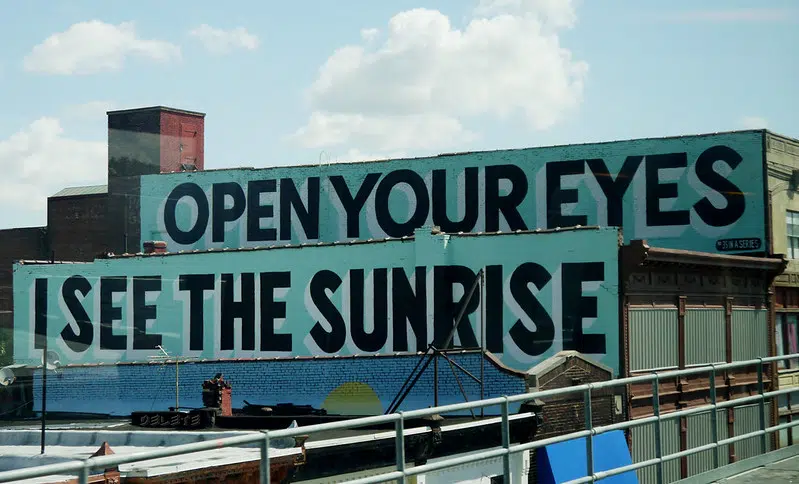
Photo: Open Your Eyes I See The Sunrise by Delete (CC BY-NC 4.0)
Former graffiti artist Steve Powers, also known as ESPO, dedicated himself to full-time studio art in 2000, but his origins still shine through in his work. Showing influence from vintage sign painting, he uses clever wordplay both in public murals and his studio. His project A Love Letter for You saw him paint over 50 rooftop murals in Philadelphia in collaboration with Philadelphia Mural Arts. Often whimsical and thought-provoking, with an uplifting message, Powers plays off Philadelphia’s history of painted advertising.
Ben Eine

Photo: Ben Eine Pro by r d h (CC BY-NC 4.0)
Also moving from illegal graffiti writer to respected artist, Ben Eine was launched to international fame in 2010 after British Prime Minister David Cameron presented President Barack Obama with one of his paintings. He regularly works indoors and outdoors, with his words often broken up along a grid system.
This article has been edited and updated.
Related Articles:
Art History: What is Contemporary Art?
12 Contemporary Artists Tell Us What it Takes to Make a Great Piece of Art
